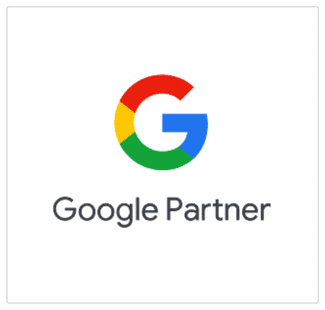Knowing your audience is a basic element in your marketing strategy and is, in essence, an important step that helps you to divide your potential customers into several market segments or to carry out what is called market segmentation, thus giving you the opportunity to identify the peculiarities and needs of your target customers and to offer them the best solution for their problem.
Conversely, market segmentation helps you to better define and understand your target audience. By segmenting potential customers into groups that share similar interests or characteristics, you can identify that group that represents your ideal customer.
Why is market segmentation important?
By knowing your customers better, you can design and execute marketing strategies that are better suited to your market. Market segmentation can even help you identify niches and uncovered areas that you can explore. So grouping your audience into different types helps:
- Create stronger and more targeted messages
When you know your audience very well, you can tailor your messages so that they are clear, accurate and more powerful. Market planning and segmentation benefits you in developing a strong, authentic relationship with your target audience.
- Provide a more personalised brand experience
Tailoring messages and presenting factual information helps the consumer to remember the brand and increases familiarity with its values.
- Collect more relevant and easily converted leads
Your ads and PPC lead generation campaigns will be more effective and will reach the most relevant categories of potential consumers.

- Stand out from your competitors by offering the right USP (unique selling proposition)
Your brand will differentiate itself in the market by focusing on the specific needs and interests of your target audience, giving you a strong competitive advantage.
- Gain the insights needed to launch new products
By knowing your audience in much more detail, you can identify new products or services that they may need that don’t yet exist in the market. Once identified and developed, these types of products or services can be brought to your customers much more easily, based on the data you already have.
- Achieve your marketing campaign objectives more easily
A marketing strategy built on correct objectives that reflect the reality and characteristics of your customers can only be improved by carefully designed segmentation.
As long as your segmentation is accurate, up-to-date, based on recent information and relevant data, it can do wonders for sales.
An example of market segmentation that is easy to illustrate is that practiced by hotel companies.
A hotel may charge differently for the same types of products or services, depending on different variables.
For example, a customer who booked a room 6 months in advance may pay 50% less than a customer who needs the same room on the spot.
In these situations, segmentation helps to build pricing strategies based on elasticity of demand. Guests with price elasticity of demand will be charged higher prices than guests with inelastic demand.
In our case, the demand of the guest who books in advance is more price elastic and is influenced by price, so he needs a lower rate. On the other hand, a businessman booking a hotel room at the last minute is not as price elastic and will agree to pay a higher rate.
Segmentation itself is usually based on four categories:
- demographic
- psychological
- behavioural
- geographical
Each of these segments has its own purpose. They can help any business increase brand integrity and achieve higher sales conversion if the strategy includes the right messaging.
There are, however, many ways a performance marketing agency can help you with audience segmentation based on the data you have.

This article will guide you through both some of the most popular and less common market segmentation strategies that you can use to strengthen your marketing efforts and see higher sales conversion.
7 segmentation strategies you can use to generate better results
- Segmenting by stage of the buying journey
The “Buyer’s Journey” is the path that the buyer travels through all the moments of interaction with your brand, starting even before the purchase of the product or service.
This theoretical model starts with:
- Awareness – brand awareness (the moment the customer discovers it)
- Consideration – increasing interest in the brand (when it is attracted and excited)
- Action – making the buying decision
- Recall – evaluating a possible future purchase
The strategy of segmenting the market according to this buying journey is excellent for generating more sales, for cross-selling or for managing situations where the customer gives up on products in the basket.
So, if you have a customer who is in the early stages of the journey, they are more likely to need explanatory product videos or educational content.
Whereas, if they are further along in their journey, it would be ideal to focus your efforts on reviews or examples for different product lines so that the customer can compare costs.
- Segmentation by engagement
Sometimes it can be difficult to choose the best message to deliver to your customers if you’re not sure how much they know about your brand. Here’s a list that will help you rank the level of engagement:
- Social media follows
- Newsletter subscriptions
- Open or click-through rate
- Number of purchases
- Interactions with your chatbot
You can assign a value to each of these criteria and thus better define the degree to which consumers interact and engage with your brand.
Understanding these market segmentation criteria can help you interact more with customers who are interested in your products and services and can suggest when to stop actions that might lead to overwhelming a customer.
- Seasonal segmentation
This type of segmentation is a mix between geographical and life stage segmentation.
The season is not just about the weather, although indeed this often plays an important role in our buying decisions.
Studies have shown that a drop of just one degree in average minimum temperature can cost the UK economy £2.5 billion.
However, in addition, try to think about market segmentation for marketing based on what will be happening around your customer, taking into account their age group at a particular time of year.
This relates, for example, to when young people are preoccupied with graduating from college or looking at retirement plans for older ages. So take care to deliver messages that are relevant to your customers’ life decisions at the right time.
- Segmentation by device used
Now is the time to start thinking about how your customers reach your messages via the devices they have at their disposal.
The rise in popularity and the situations where we use the Internet of Things (IoT) has fundamentally changed the way we all interact and communicate. Segmenting the market by device allows you to optimise both messaging and media created specifically for the screen on which it will be delivered.
This segmentation helps you become more efficient and intelligently dose your advertising and communication efforts.

- Each segment has a sub-segment
Your company should sub-segment your customers in different ways, using complementary core variables and interact with your target audience through content that takes into account the different categories in which the end consumer may fall.
The sub-segmenting strategy approach involves dividing the customer database into at least two different modes and developing relationships with customers for all combinations of sub-segments. There are many ways in which a company can choose to sub-segment its customers and it is only effective if the brand performs better than universal targeting.
- Segmentation based on spending habits
This segmentation strategy is an excellent way to catalogue your customers and identify how much they are willing to spend on your product or service. Here you need to take into account the frequency with which they purchase, the value of the purchase and the timeframe in which they are made.
This way of working can not only increase sales from existing customers, but can also help you make better strategic marketing decisions. By identifying how much a customer is willing to spend for what you offer, you can sell similar products within their budget.
Of course, this can also help you make decisions about the content you create for your brand easier.
What type of content and messaging convinced a certain market segment to buy your products or services? The answers to this question will help you create content that converts better and eliminate content that doesn’t convert.
When a type of communication does not generate sales, you need to re-evaluate its necessity and relevance to your target segment.
- B2B segmentation
There are many market segmentation strategies that focus on the consumer, but lately it has taught us to take into account all the opportunities for additional revenue.
B2B strategies can encompass all levels of market segmentation discussed above. Business customers can also be split according to specific dimensions such as gross or net revenue.
Even the nature of the business is an important segment as the messaging and approach for a bank may be different from that of a florist.
This article has been mainly aimed at giving you solutions and segmentation ideas that you can use in your own marketing campaigns.
Because there is no one formula for market segmentation that is valid for all businesses, there are many ways to segment the market besides the four traditional ones discussed at the beginning of the article: demographic, psychological, behavioural and geographic.
So, try to adapt as accurately as possible to the realities of your industry when defining your customer groups, but don’t forget to keep the segments large enough.
A sizable segment size helps you get enough data to evaluate your results and adapt your future communication strategies.







